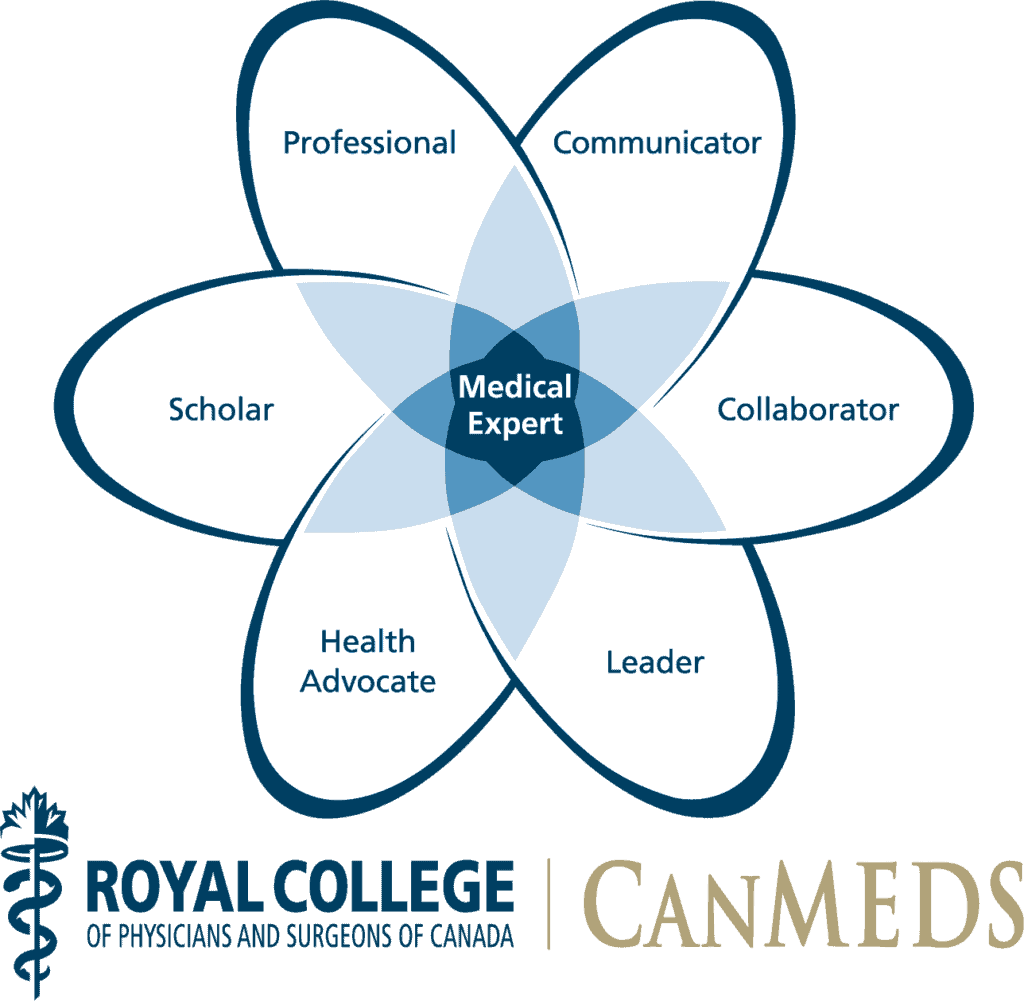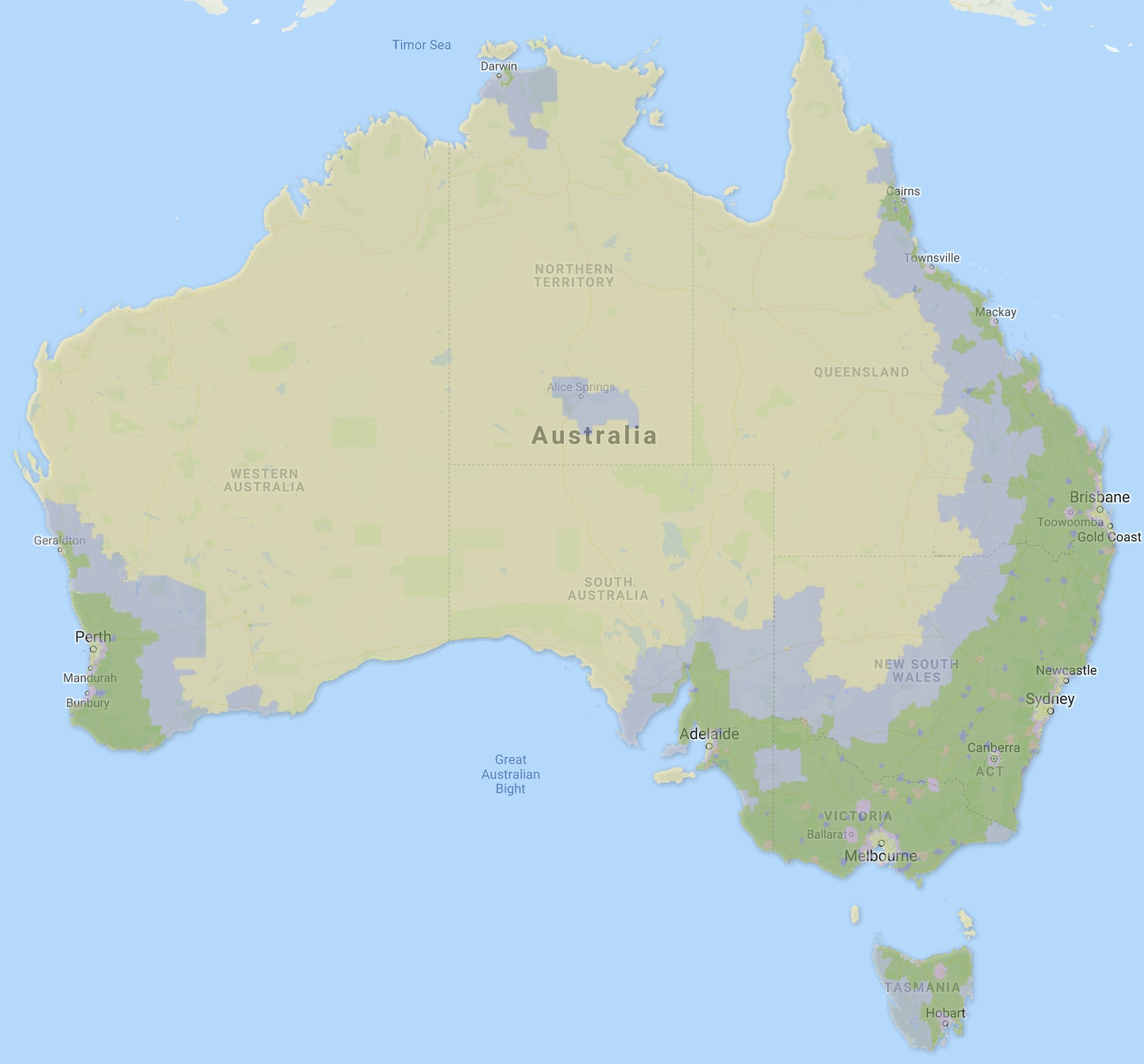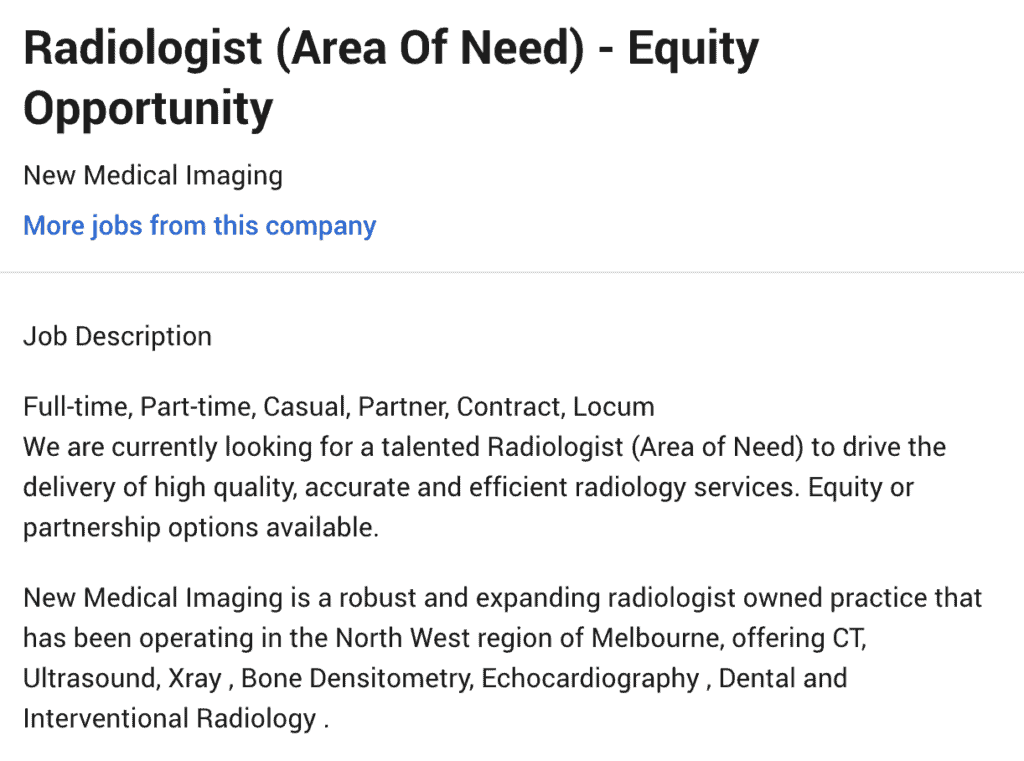*The process of getting a job and getting registered as a doctor in Australia is complex, it’s important to understand that you do need to get individual advice on your circumstance. Circumstances do vary for individuals and also things change over time.
If you are an ad doctor looking for some general information about your options for getting registered in Australia, then this post is for you. I spend a lot of time on Zoom calls these days explaining to doctors from overseas countries (International Medical Graduates or IMGs) what their options are for working as a doctor in Australia. It’s quite a complex process. And inevitably at some point, it makes sense to talk one on one. Particularly if you are starting to get serious about the idea of working as a doctor in Australia. If that’s you I’d recommend booking a strategy call.
With that being said. Let’s look at the four pathways available for IMG doctors to become registered in Australia from overseas. And let me be quite clear here. These are not the main pathways. They are the only pathways available for getting registered in Australia, at the time of writing this post. If you are a doctor coming from overseas to Australia your pathways to registration are:
- The Standard Pathway, which is a general registration pathway for doctors from any country who do not have specialist qualifications and are looking to start at junior doctor level in Australia.
- The Competent Authority Pathway, which is a restricted pathway that enables both specialist and non-specialist doctors from the United Kingdom, United States of America, Republic of Ireland and Canada to commence their work in Australia.
- The Specialist Pathway, which is a pathway that can ultimately lead to recognition as a specialist in Australia and requires you to be initially assessed by the relevant medical specialty college.
- The Short Term Training in a Medical Specialty Pathway, which allows for time-limited registration, so that advanced trainees and specialists from other countries can obtain some top-up training in Australia.
It All Comes Down To the Medical Board of Australia.
So the first thing to know about getting registered in Australia is that it’s the same final authority wherever you work in the country. No matter what state or territory you are in, it’s all conducted through what’s called the Medical Board of Australia under the overarching umbrella of the Australian Health Practitioners Regulation Agency.
This is actually a reasonably new thing in Australia. Prior to 2010, the various state and territory medical boards were responsible for registration, which actually made the process even more complex.
Under the Medical Board of Australia, there are essentially four pathways to becoming registered as a doctor in the country. And if you’re an IMG, you can find some very helpful information about these pathways on the board website.
There are even handy flow charts that can help you make some decisions about which option might be best for you.
But It All Starts with the Australian Medical Council.
Whilst the endpoint for registration for IMGs is the Medical Board the starting point is always the Australian Medical Council. For some IMGs (those attempting the Standard Pathway) you will have a lot to do with the AMC. But for the rest it’s really a very quick but mandatory step where you have to get your medical degrees verified.
Why Have Pathways to Registration?
Pathways to registration in this country for international medical graduates are essentially comparisons against the process by which Australian and also New Zealand medical graduates are given registration.
Australian graduates first become registered in the system upon graduating from medical school as interns and progress through what is called provisional registration to general registration. After this most Australian doctors hope to eventually add what is called specialist registration to their registration status at some point.
The four pathways to getting registered in Australia are therefore pathways that lead to a form of initial or provisional registration. But which ultimately lead to the IMG being able to gain either general or specialist registration. This is with one notable exception. The Short Term Specialist Training Pathway, which is a time-limited pathway that does not lead to either general or specialist training.
The Competent Authority Pathway.
The competent authority (CA) pathway essentially recognises that doctors that come from other healthcare systems, with similar systems, and processes, and standards to the Australian context, have a level of equivalence.
The competent authority pathway is for both non-specialists as well as specialist doctors. It is a streamlined process for becoming granted registration in Australia. The board has approved a number of international authorities as competent in their assessment of doctors for medical registration. The reason that these authorities are deemed competent (and others are not) is unclear but historically well before the advent of the Medical Board of Australia, these jurisdictions were given preferred status by the old State and Territory Medical Boards. Arguably these countries do have medical training systems that are equivalent to Australia.
The authorities are:
- the General Medical Council in the UK for local UK graduates as well as international graduates who go through the PLAB pathway.
- the Medical Council of Canada.
- the Educational Commission for Foreign Medical Graduates of the United States and the United States Medical Licensing Exam (essentially, anyone who has the USMLE certificate).
- the Medical Council of Ireland.
- And the Medical Council of New Zealand*
*The Medical Council of New Zealand is only listed here for IMG doctors who go through what’s called the NZREX process. Something akin to the AMC Standard Pathway process in Australia. Actual medical graduates of medical schools in New Zealand are considered absolutely equivalent to Australian graduates of Australian medical schools because these schools are actually also accredited by the Australian Medical Council.
So if you have primary qualifications in medicine awarded by a training institute, which is recognised in the competent authority jurisdictions and also recognised by the Australian Medical Council you will normally be permitted to apply to work as a doctor in Australia under this pathway.
This is on the proviso that you have completed some clinical training or assessment within that authority. This differs from jurisdiction to jurisdiction but is either a year of training or two. So, for example, in the UK, that would be the first foundation years. Whereas in the US it would mean completing 2 residency years in an ACGME accredited post.
Why Is The Competent Authority Pathway Attractive?
If you are eligible for the Competent Authority Pathway in Australia this is generally a good thing as it is considered to be the easiest pathway to getting registered and being able to start working here.
Often times employers will also prefer say a UK-trained doctor over a doctor from Sri Lanka when there is a need to employ an IMGs.
If you are eligible for the Competent Authority pathway essentially all you need to do is convince an employer to offer you a suitable position and have the intended supervision for this position assessed by the Medical Board of Australia.
Once you are approved for registration you work for 12 months under provisional registration and will need to complete satisfactory supervisor reports. If all goes well at the end of this process you are able to apply for general registration. There’s no need for examinations or other forms of assessment (other than supervisor reports).
(It should be noted that sometimes doctors from CA countries who are applying for specialist registration also work for 12 months under this pathway. In this situation you do not gain general registration at the end of the process you gain specialist registration in your particular specialty.)
The Standard Pathway.
The next pathway is the most common pathway that the majority of IMGs attempt in order to work as doctors in Australia.
The standard pathway applies to IMGs who are not eligible for the competent authority pathway and who do not have specialist qualifications. To come in through this category, you need to have a recognised primary qualification in medicine. But before you can apply to the Medical Board of Australia for registration or approach employers for jobs, you have to go through some additional steps with the Australian Medical Council.
These steps include the mandatory check of your degree, which all IMGs have to do. But also include sitting for the AMC Certificate examinations, which is a 2 part examination, consisting of a Part 1 MCQ Exam, and then a Part 2 Clinical Examination.
You can actually begin to apply for jobs once you have successfully passed the AMC Part 1. But you will only be able to gain general registration once you have completed the full certificate.
We have a guide to the AMC exam here. The AMC Exam, particularly the clinical exam, is generally considered to be a very tough and difficult examination to complete. Despite this, there are quite a few IMG doctors who have obtained their certificate but have been unable to find employment as a doctor in Australia.
The Specialist Pathway.
The final main pathway for most IMGs is the specialist pathway. This pathway is for overseas trained specialists so that they can apply to be assessed against the capability of a similar Australian-trained specialist. A process that is called “comparability”.
This process includes IMGs applying for what is called Area of Need positions, which are extremely rare to find these days. As well as specialist IMGs just going for assessment with the college.
As with all other pathways, you need to have a recognised primary degree first. But then just to create more confusion IMGs applying for the specialist pathway don’t apply to the AMC or the Medical Board for assessment they apply to the relevant specialist college. Which then performs an assessment.
So if, for example, you’re a specialist from a competent authority country, it can be very confusing because you can apply to the Medical Board of Australia for provisional registration under the competent authority pathway to work in a supervised position.
But at the same time, you need to also apply it to the college to assess your specialty training and experience and qualifications in order to get registered as a specialist and come through the specialist pathway.
Applying for the Specialist Pathway assessment involves quite a bit of time and money. In general, you will need to fill out an extensive application outlining all of your past experiences to date. The more complete and detailed you make this generally the better the outcome. The college may just reject you based on your application. But generally, in the case of most colleges you are then invited to an interview to further explore your credentials.
There are only 3 outcomes for this assessment process:
- You are deemed not comparable.
- You are deemed partially comparable.
- You are deemed substantially comparable.
Being deemed not comparable means you need to think about other pathways.
Being deemed partially comparable or substantially comparable means that the college views you as either being within 2 years (partially comparable) or 1 year (substantially comparable) of becoming a specialist in Australia.
If you achieve comparability you will still need to secure an appropriate post where you can receive oversight by other specialists in your field. In the case of partially comparable, it is also likely that you will need to sit further examinations.
If you gain a post and complete all the requirements you will finally be recommended to the Medical Board for specialist registration.
We will eventually have a more detailed post about the specialist pathway. But in the meantime the following 2 blog posts are useful:
- A Guide to the Medical Specialist Colleges
- 3 Common Mistakes to Avoid When Applying For the Specialist Pathway
As well as our series of videos on the Specialist Pathway on YouTube.
The Short Term Specialist Training Pathway. The Final Pathway.
There is actually a fourth pathway option. This option is not as well known to IMGs as the other 3 options. And this is perhaps because it is not a pathway to permanent registration in Australia.
The final pathway is called the Short Term Training in a Medical Specialty Pathway, or Short Term Specialist Training Pathway. This pathway is limited to IMG doctors who are either already specialists or in the advanced or final phase of their specialty training. Ostensibly the pathway is designed to facilitate additional “top-up” training or experience, i.e. it is designed to give a specialist from another country some additional training and experience to help when they return to their own country.
The pathway is therefore strictly limited to 2 years and you generally have to complete a form indicating that you are intending to return to your own country at the end of this period of registration.
To be eligible for this pathway you first need to secure a job offer (usually an Advanced Training post) from an employer. Like all other pathways, you need to verify your degree with the AMC. You also need to apply to the specialist college for assessment of your credentials against the post you have secured.
Unlike the specialist pathway, the college assessment is only paper-based, requires less information, and generally easier to pass.
Is Short Term Specialist Training A Pathway to Working Permanently in Australia?
Even prior to the advent of the one Medical Board there were registration categories in existence that enabled trainee doctors from other countries to come to Australia and work for a limited period of time.
It was not uncommon for these doctors to take the opportunity whilst working in Australia to pursue other forms of registration and the case is the same still with the Short Term Specialist Training Pathway.
So, whilst the pathway itself is designed to be time-limited and there is a requirement to state your intention to return at the end of your registration period. There is really no way of enforcing this and there is nothing to say that you might change your mind halfway through the process.
And I have certainly seen a number of IMG doctors use this particular pathway as a “stepping stone” to a more permanent registration category.
Whilst, specialist colleges are not permitted to take into account any experience you have gathered under the Short Term Specialist Training Pathway, it is hard for them to ignore the fact that you have already worked successfully in the Australian context and also hard to ignore references from Australian College Fellows attesting to your capability.
Similarly, if you have proven your work capability in an Australian health service then this tends to dramatically improve your prospects with employers in Australia for other jobs over and above most other things, including things like qualifications and observerships.





